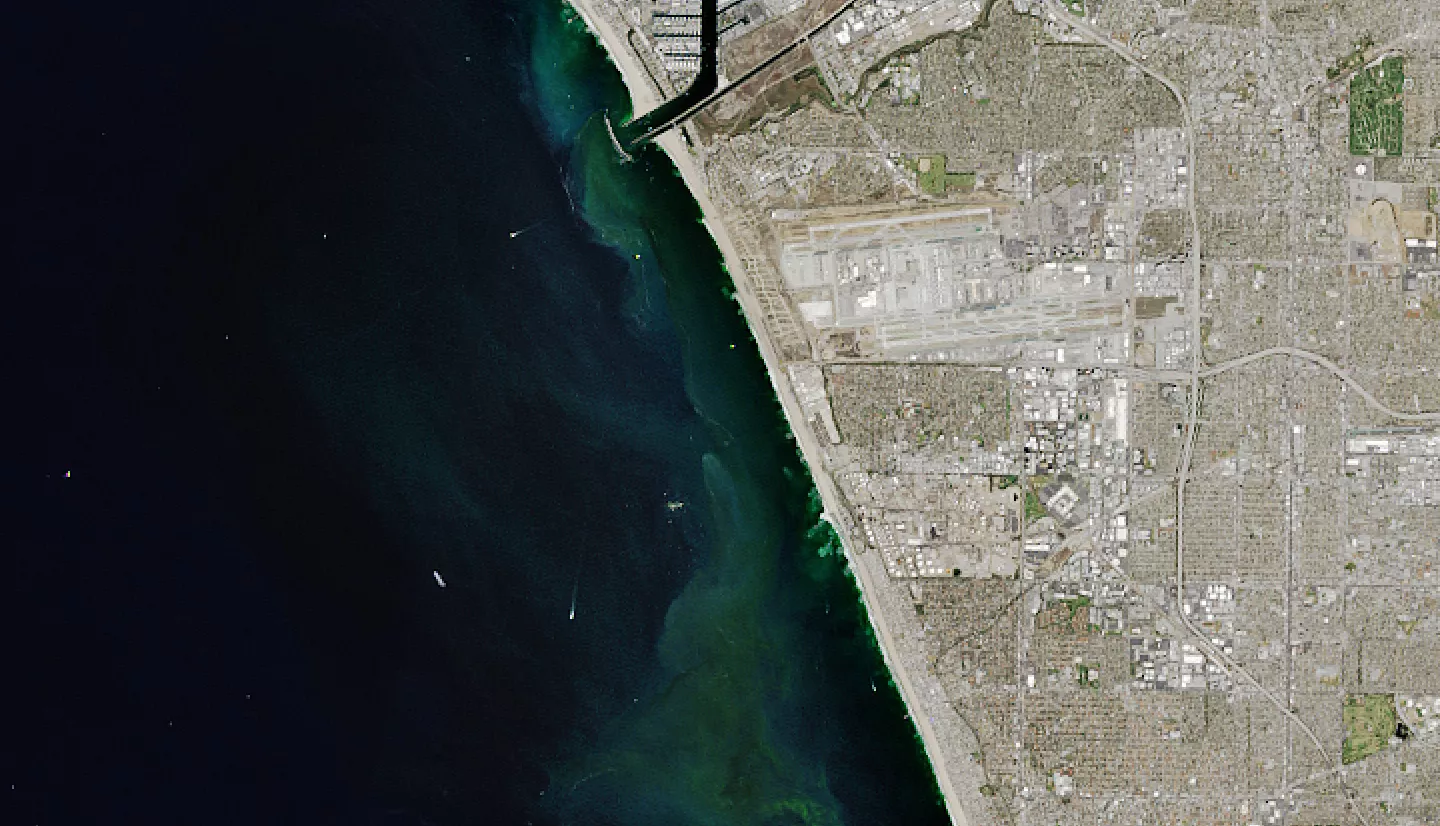In 2015, Los Angeles' oldest and largest wastewater treatment plant underwent major repairs. Researchers at NASA’s Jet Propulsion Laboratory (JPL) helped track how this event affected the water off California's coast.
The Hyperion Water Reclamation Plant in Los Angeles serves around 4 million people. It treats wastewater from sinks, showers, toilets, and surface runoff from storm drains. And its main outflow pipe transports wastewater five miles offshore. At that distance, the seawater is deep enough to ensure that the waste won't pose a risk to nearby beaches.
But from September 21 to November 2, 2015, plant operators had to shut down Hyperion’s main discharge pipe. As an alternative, they use a backup pipe, which released waste just a mile from shore.
Using satellites, the JPL team was able to track the area in near-real-time. The researchers provided LA Sanitation with insight on potential hazards. For example, midway through the shutdown, the Operational Land Imager (OLI) on the Landsat 8 satellite acquired an image of Santa Monica Bay. Green patches near the coast showed phytoplankton blooms. These were likely caused by an excess of nutrients from the wastewater discharge.
The team also guided LA Sanitation on where to collect water samples to test for harmful bacteria. For instance, satellite data showed higher chlorophyll concentrations along the southern shoreline of Santa Monica Bay. Chlorophyll is a proxy for the amount of phytoplankton in the water. In this area, water testers found that 10 percent of the samples contained potentially harmful amounts of fecal bacteria. Beaches were temporarily closed as a result.
More information available at the NASA Earth Observatory story Monitoring Outflow and Algae.




